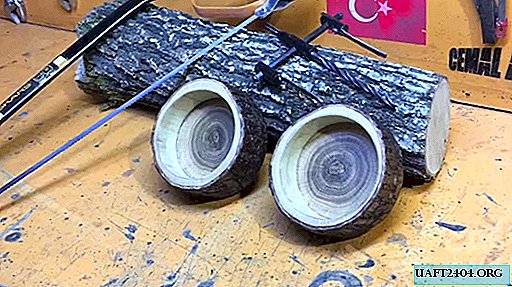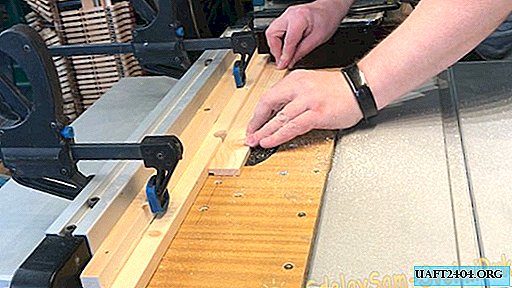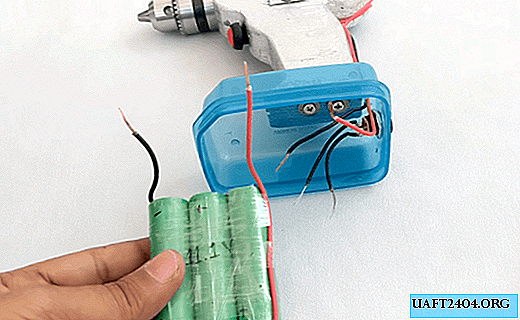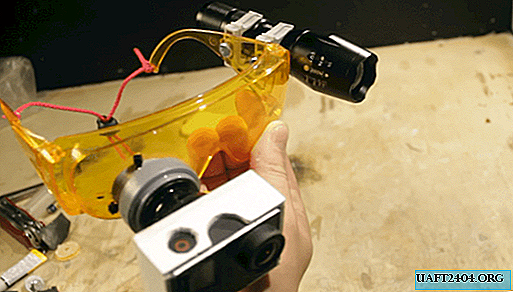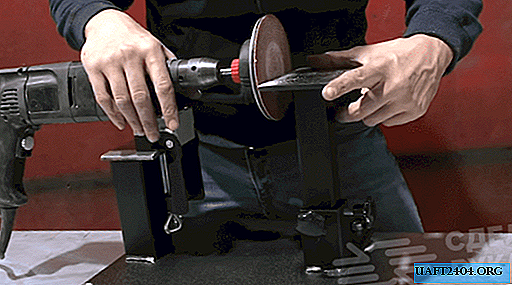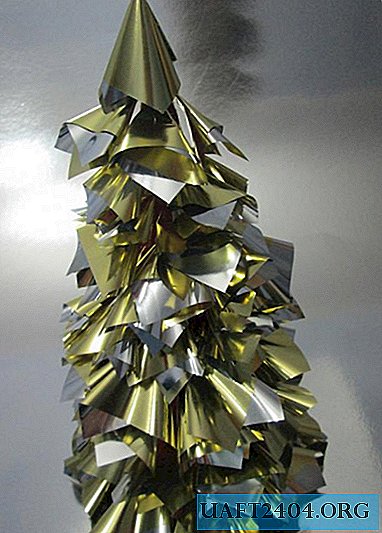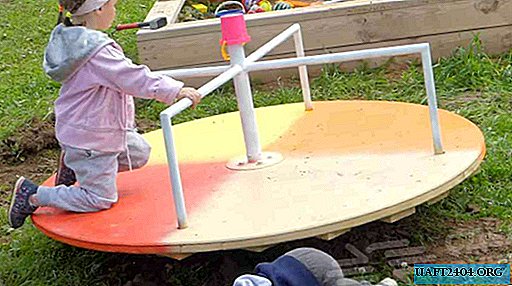Share
Pin
Tweet
Send
Share
Send
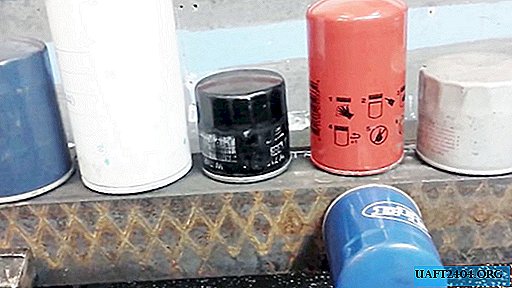
In addition, during the time from replacement to replacement, the filter housing is covered with dust, dirt, various oily deposits, and hands, not finding the necessary grip, slide along the surface of the part.
What to do if it was not possible to twist this interchangeable product with one hand?

You should use the following simple, but quite convenient and effective devices.
1. A stripper in the form of a metal tape and a bolt with a nut
The device consists of a metal tape, which at its ends passes through the slots in the curly bracket, symmetrically located relative to its center, in which the bolt abuts with a nut screwed on it.
The tape forms a loop-girth, and its ends are fixed on two opposite sides of the movable nut by means of short screws. If you unscrew the bolt, then the nut slides down, and the diameter of the loop increases. When the bolt is screwed in, the nut goes up and the loop is shortened. The bracket in its lower part is made along an arc of a circle.

The puller loop loops freely over the oil filter housing and is tightened by tightening the bolt due to the fact that the nut rises along the bolt and pulls the ends of the metal loop.
When the loop tightly encircles the filter housing, the puller becomes a kind of lever, rigidly fixed to the removable node. Now it remains only to apply a small force to the puller-lever counterclockwise to tear the filter from its seat.
After that, the puller can be removed, and the filter can be unscrewed by the fingers of just one hand.

2. Crab type puller
It is a kind of similarity to the planetary mechanism: one central cylindrical gear and three satellite gears of the same size and type, each of which engages with the first.
External gears are located around the central evenly around the circumference, that is, at 120 degrees to one another. All of them are fixed with their axes on a strong and hard round disk and a triangular plate with rounded angles on the back of the gears.
The central gear is driven into rotation by a key through a nut located with the front side of the plate on the extension of the axis of the central gear. At the same time, the side gears of the satellite begin to rotate within less than one revolution around its axis, which is quite enough for the work of a clamp of this type.

The oil disk case is clamped by L-shaped brackets of circular cross section, which are welded with the short side perpendicular to the generators of the side gears right in the center so that the angle between them is also strictly 120 degrees. Moreover, the long stems of the brackets should be parallel to each other and oriented in the direction opposite to the location of the nut. For a better grip, the long sides of the staples, starting at least from the middle to the end, are equipped with a protruding longitudinal notch.
If the brackets are arranged radially, then the conditional cylinder inside them has a maximum diameter. Rotating the nut left or right brings the brackets together, and the diameter of the conditional cylinder decreases.

Using this device is quite simple: grab the brackets of the oil filter and use the wrench to turn the nut to the left, thereby twisting the filter from its seat. When the nut is rotated to the right, the filter, on the contrary, will twist.
3. Chain puller
The main element in it is a piece of chain, which at one end is fixed in the “horn” of the handle along with the swinging arm, its other end is free. But, so that the chain does not jump out of the “horn”, a pin is inserted into the end link, the ends of which are divorced.
To unscrew the oil filter, the chain is pushed onto its body, pulled by the free end and pounced on the two teeth on the handle. They do not allow the chain grip tightened around the filter housing to open and loosen the clamp.
Now it remains only by hand to turn the puller handle counterclockwise, and the filter can easily be unscrewed. If you throw the chain in the opposite direction, then turning the knob clockwise, the filter can be installed in its original place and tightened to the stop.
After completing the unscrewing or twisting, it is enough to remove the force from the handle, as the chain loosens by itself and it can be removed from the filter housing.


4. Adjustable wrench
Perhaps this is the most convenient device, if its size allows you to part the jaws to grasp the body of the oil filter, the diameter of which can sometimes exceed 100 mm. And also for him you need a place commensurate with the length of the adjustable wrench. And how to find it on the engine of not only a passenger car, but also a truck? Therefore, this method is almost useless in practical terms.

5. Powerful screwdriver
Modern oil filters mounted on car engines are mainly disposable. Therefore, after the first use, they are good for nothing. So there is nothing to spare them.
Hence the last “barbaric” way of unscrewing the oil filter using a strong and, preferably, a long screwdriver with a sharp sting and a durable handle.
We set the tip of the screwdriver to the generatrix of the filter, as close as possible to the bottom of the removable part. Holding a screwdriver perpendicular to the surface of the case, we strike the end of the handle with a hammer until we break through the upper and opposite walls. The tip of the screwdriver should come out.
Thus, we created an impromptu lever, to which it is enough to apply a little effort counterclockwise, and the filter will be easily unscrewed. Moreover, the longer the screwdriver, the less force will be required to unscrew. The disadvantage is the same as in the previous case: a lot of space is required.

Conclusion Note
How to unscrew the oil filter if the first three devices are not at hand, and there is no place to use the last two. Try using sandpaper.
To do this, put gloves on your hands, cut off a proportionate piece of coarse sandpaper, grab the filter housing with it and try to move the filter with both hands. Usually this succeeds, because you only need to overcome the crushing force of the annular rubber gasket to seal the filter and tighten the thread.

Share
Pin
Tweet
Send
Share
Send

